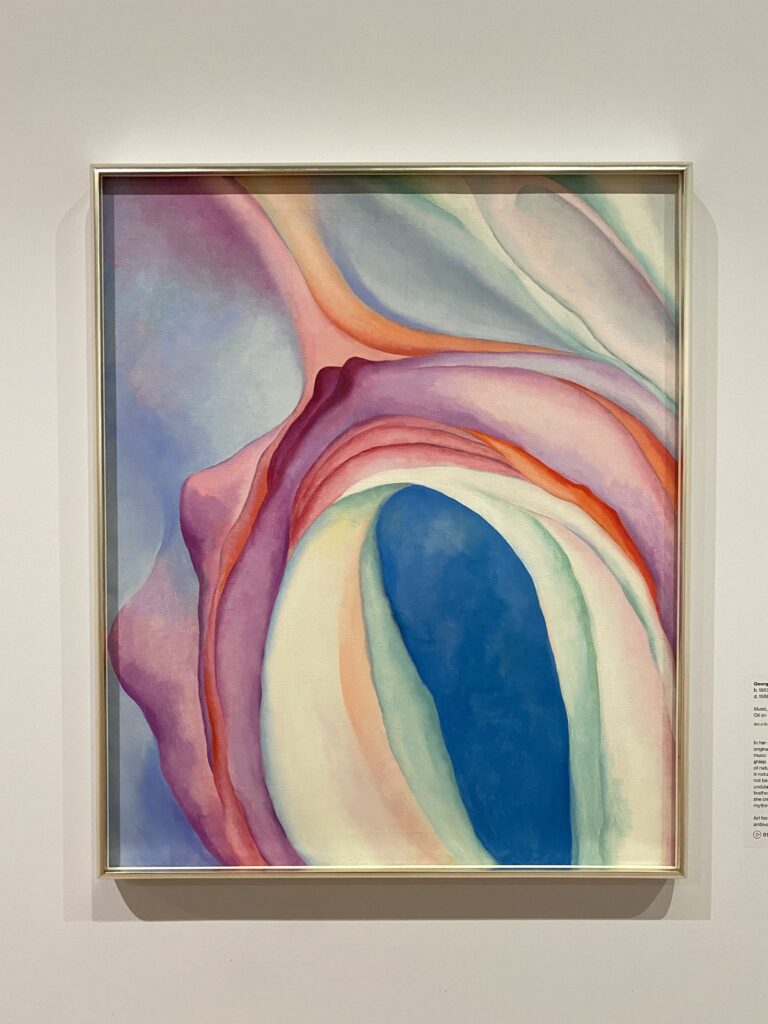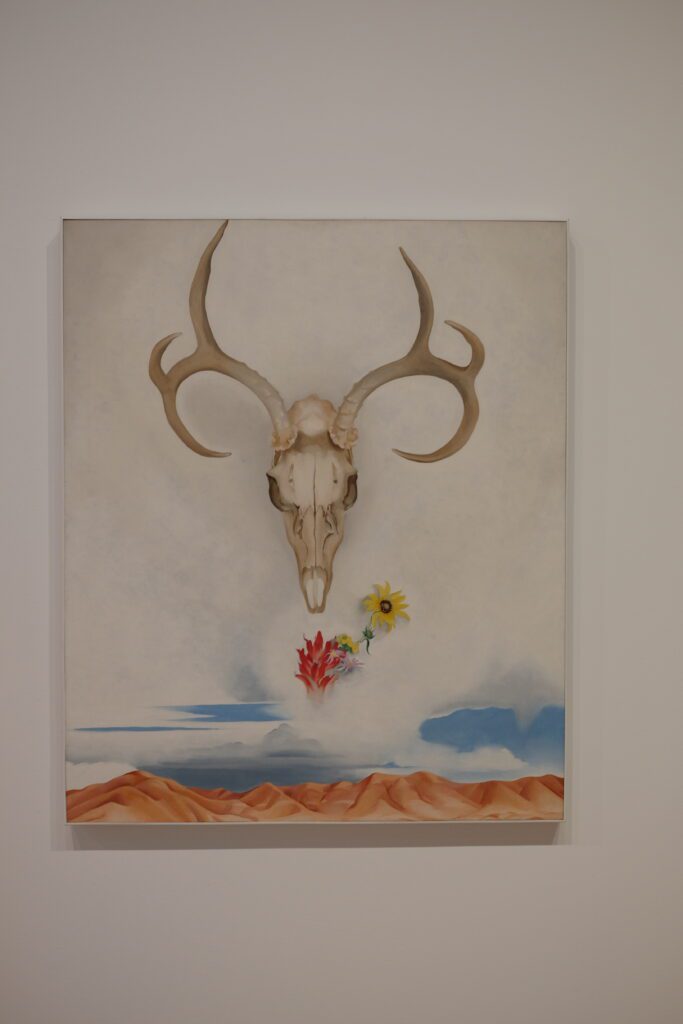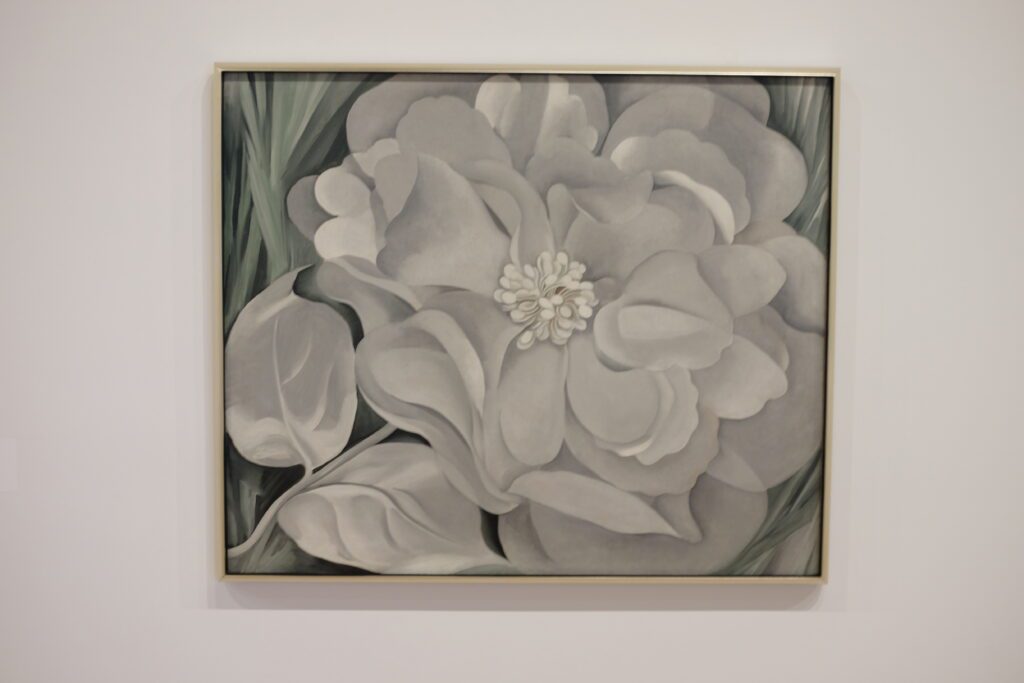
Deserts & Flowers: Georgia O’Keeffe’s Motifs Explained
Georgia O’Keeffe (1887-1986) was an American artist who specialized in depicting enlarged flowers, skyscrapers, and landscapes. She has been recognized as the “mother of American modernism.”
With a career spanning seven decades, she remained independent from shifting art trends and stayed true to her own vision, which was based on finding essential, abstract forms in nature.
We will be taking a closer look at the themes and symbols in her artwork.
Some Background on Georgia O’Keeffe
Born near Sun Prairie, Wisconsin, O’Keeffe received art training at the Art Institute of Chicago, The Art Students League of New York, the University of Virginia, and Columbia University’s Teachers College, New York.
While at the University of Virginia, she was introduced to the work of Arthur Wesley Dow, who focused on capturing the essence and feeling of an object rather than the exact image of the item or scene. This had a significant influence on O’Keeffe’s work, and she began to experiment with abstraction, attempting to capture the world of her sensations and feelings in visual images.
Her images spoke as much about what was absent as they did about what was depicted. O’Keeffe’s work shows the influence of the photographic image, with close-ups and the ability to crop an image to focus on what is essential to the painting.
Her work attracted considerable commercial success during her lifetime and posthumously. In 2014 her painting Jimson Weed sold for $44,405,000 at a Sotheby’s auction, breaking all previous records for work by female artists. In 1997 The Georgia O’Keeffe Museum was established in Santa Fe, where she spent the later years of her life.

What Are Common Symbols in O’Keeffe’s Artwork?
O’Keeffe was a part of an American art movement called Precisionism, and although she painted some abstractions, she mainly stuck to depicting reality in synthesized, sometimes very decorative forms. These forms were often derived from organic objects and what O’Keeffe experienced firsthand.
Flowers and Leaves
Many of O’Keeffe’s works featured images of flowers and leaves. Over the course of her career, she created somewhere around 200 images of flowers. In O’Keeffe’s Red Canna painting series, she focuses on close-up images of the interior view of flowers.
O’Keeffe often commented that the color and form of the flowers were more important than the subject matter, suggesting that she was interested in the natural form and capturing its beauty. This could also be seen in her close-up paintings of leaves like in Leaf Motif.
Flowers are often symbolically associated with femininity and softness, love, and sexuality. Many of O’Keeffe’s images contain several flowers on one large canvas. In this way, she seems to capture something of the beauty and vastness of nature.
New York City and Skyscrapers
She came to New York in an era of growing skyscrapers, and they became her main subject in cityscapes. Almost all of them stick to elongated, vertical proportions highlighting the buildings’ monumental scale.
Some paintings show skyscrapers’ splendor, especially at night, when they become richly illuminated – almost towers of light. But the artist also captured Shelton Hotel, in which she herself lived, in bright daylight, with the sun glaring from behind its facade. She transformed the photographic effects and lens flare into the painting in the form of yellow and orange dots. O’Keeffe was skilled at incorporating the effects found in photography into her paintings.
Despite all the fascination she had for the city, her main interest was not man-made structures but nature. Even in New York, she searched for the little patches of sky and clouds, between the tops of the skyscrapers.

The Southwest
O’Keeffe found new subjects to paint in the sun-bleached animal bones and the rugged mountains that dominate the terrain. Two of her earliest and most celebrated Southwestern paintings like—Cow’s Skull: Red, White, and Blue and Cow’s Skull with Calico Roses.
Rather than signifying death, O’Keeffe said that the bones symbolized the eternal beauty of the desert. Later, she painted fanciful canvases that combined skeletal objects and landscape imagery in the same composition.
It was the region’s majestic landscape, with its unusual geological formations, vivid colors, clarity of light, and exotic vegetation, that held her attention for more than four decades. Often she painted the rocks, cliffs, and mountains in dramatic close-ups of New Mexico landscapes.

What Do the Flowers Symbolize?
Many speculated that these images referenced female genitals and sexuality, an idea that seemed to be fuelled by controversial images that O’Keeffe’s husband had taken of her and displayed publicly. This seemed to give fuel to the notion that O’Keeffe was an artist with a tendency to express overt sexuality, although this was an idea that she herself denied, claiming that her works were not intended to reference female sexual identity. Notably, it was largely male critics who expounded the view that her work referenced female anatomy like the vulva and vagina specifically.
However, in many of her works, O’Keeffe focused on the internal view of the plants and flowers she depicted, including the stamens and inner layers of the petals, which resemble the female vagina. This has led some modern-day critics to contest that despite the artist’s protestations, there does seem to be a reference to the concept of reproduction and female sexuality within the work.

Several feminist critics have praised O’Keeffe’s work as capturing feminist themes far ahead of their time. Indeed, in the era in which she was working, O’Keeffe was in a male-dominated world and was repeatedly reminded of her gender and otherness as she moved through the art world.
It is hard to say exactly what O’Keeffe intended to symbolize with her flower paintings. They are the most iconic image within her works and the subject matter she is most remembered for, but whether she intended to evoke symbolic images of sexuality is hard to say.